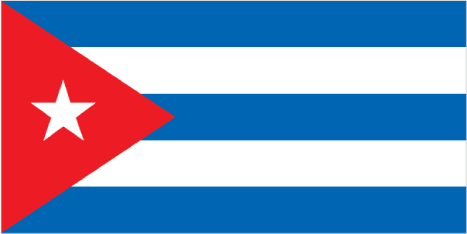To help inspire or plan your trip to Cuba, some of its major attractions
for travellers are shown below, including some of the best natural, historical, cultural and adventure sites in the country.
These include all of UNESCO World Heritage Sites for Cuba which represent the best
of the world's cultural and natural heritage.
Click on the icons below to focus on specific types of features
(click again to return to all).
|
|
|
|
|
|
|
|
|
|
|
|
 |
|---|---|---|---|---|---|---|---|---|---|---|---|
| Natural | History | Wildlife | Trekking | Cities | Religious Monument | Boat Journey | Rail Journey | Diving | Cultural | Adrenaline | UNESCO WHS |
Western Cuba - Cultural attractions
| Havana | |
|---|---|
Cuba's capital city is one of the most beautiful, vibrant and unique cities in the world. Havana boasts the finest collection of colonial architecture in Latin America, having suffered little damage in the independence and revolutionary struggles, and crumbling buildings stand side-by-side with exquisitely renovated structures. Old Havana (La Habana Vieja) within the old city walls is built around the four main squares - Plaza de la Catedral, Plaza de San Francisco, Plaza Vieja and Plaza de Armas - each totally distinctive with the Plaza de la Catedral one of the most beautiful and atmospheric squares in the world. There are many impressive colonial buildings along Calle del Obispo, the main shopping street, and the Paseo del Prado. The Museo de la Revolucion located in the former Presidential Palace contains a comprehensive account of the revolution, including the hull of the 'Granma', the boat that brought Castro back from exile in 1956. El Capitolio is one of Havana's most spectacular buildings, while the Plaza de la Revolucion in the Vedado district contains the famous Che mural and the Jose Marti Memorial tower, offering spectacular views of the city. The Malecón extends for 7km along the sea front - lined with Art Deco buildings, it attracts many Havanans in the evenings and is a nice way to stroll back to Habana Vieja. A tour of a Cuban cigar factory, such as the famous Real Fabrica de Tabacos Partagas near El Capitolio, is also an important part of the Havana experience. Much of Havana's appeal however lies simply in the undeniable atmosphere and rhythm of the city which is impossible not to get caught up in. There are endless bars to listen to the intoxicating Cuban 'son' music, try your hand at salsa dancing and sip a classic mojito or cuba libre. Other options include the numerous jazz clubs and opera and ballet at the magnificent Gran Teatro de La Habana. UNESCO World Heritage Site: Old Havana and its Fortifications | |
| Viñales Valley | |
|---|---|
The Viñales Valley in the Piñar del Rio province west of Havana is one of the most beautiful areas in Cuba. The valley is dominated by spectacular mogotes - karst-like conical towers of limestone up to 300 metres high formed by millions of years of wind and water erosion. Interspersed amongst these are the lush green fields of tobacco and sugar cane that form an important part of Cuba's economy. Traditional agricultural techniques are still used to maintain the best quality tobacco for Cuba's famous cigars. The valley is ideal for exploration by foot of its natural and cultural uniqueness. UNESCO World Heritage Site: Viñales Valley | |
Eastern Cuba - Cultural attractions
| Santiago de Cuba | |
|---|---|
Santiago de Cuba is the country's second city, located on the east of the island. Founded in 1514 it served as Cuba's capital until it was abandoned in 1553 when the capital was moved to Havana. Further settlement by the French and African slaves gave the city a unique cultural mix that make it one of the most interesting places in Cuba. Santiago is the centre of Cuban music and its bars and nightlife are legendary. The city has been the epicentre of revolution for centuries and it was here in 1953 that Fidel Castro and his followers attacked the Moncada Barracks, a disastrous assault but one which kick-started the revolution. Six years later on January 1st, 1959, Castro returned to Santiago to proclaim the success of the revolution. The Plaza de la Revolucion has a monument to the Independence heroes while the impressive Santa Ifigenia cemetery contains the grave of independence hero Jose Marti. Outside of town the Castillo del Morro fort is one of the best preserved in Cuba and commands excellent views over the harbour and the Sierra Maestra Mountains. UNESCO World Heritage Site: San Pedro de la Roca Castle, Santiago de Cuba | |
| Baracoa | |
|---|---|
Baracoa was the site of the first Spanish settlement in 1512 and Christopher Columbus himself arrived here 20 years previously. Located on the easternmost tip of Cuba, Baracoa is a quaint, sleepy town surrounded by tropical mountainous jungle. It's a great spot to relax after travelling through the country and to explore the surrounding mountains and learn about life in this remote part of Cuba. A hike to the summit of El Yunque (575m), the anvil-shaped mountain mentioned by Columbus in his diaries, will take you through coffee, banana and cocoa plantations as well as thick forest with numerous bird, reptile and butterfly species. | |





